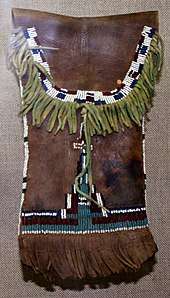Murano beads
Murano beads are intricate glass beads influenced by Venetian glass artists.
Since 1291, Murano glassmakers have refined technologies for producing beads and glasswork such as crystalline glass, enamelled glass (smalto), glass with threads of gold (aventurine), multicolored glass (millefiori), milk glass (lattimo) and imitation gemstones made of glass.
Color
The process of Murano bead-making begins with the production of color canes. The chemical compounds involved in color fabrication are extremely sensitive so they must be mixed with absolute accuracy. Aquamarine is created through the use of copper and cobalt, and ruby red is achieved through the use of a gold solution as a coloring agent.
Lampworked beads
Most Murano beads are made using an air pump burner lampworking or torch and mandrel technique. Once the mandrel was made by using an iron rod covered with a release material stuck on the top of the rod; now a copper tube has taken its place. The copper tube helps make many other different shapes.
The lamp-work method is the most time-consuming method of glass bead-making, as each bead must be formed individually. Using a torch for heat, Murano glass rods and tubes are heated to a molten state and wrapped around a metal rod until the desired shape is achieved. Several layers of different colored glass, as well as gold and silver leaf, are used to produce the desired effect. After the bead is slowly cooled, it is removed from the rod, resulting in a hole for eventual stringing as jewelry.
Wedding cake beads known as Fiorato (decorated with glass overlays featuring roses, swirls and dots) and Venetian foil beads (with fusion of color, gold and silver foil) are two of the kinds of beads made using the lamp-work method.
Seedbeads or conterie
Seedbeads or conterie are small, round beads. To produce this tiny bead, hollow tubes of colored glass are formed, then chopped and re-fired for smoothness and shade.
Chevron or Rosetta beads
First produced in Murano at the end of the 14th century, these beads are made of a hollow cane and six layers of glass: white, blue, white, brick red, white and finally blue.[1] After this layering of color, these beads are ground to produce patterns of five concentric stars with twelve points. The canes are then sliced into individual beads. The Chevron bead is distinguished by a red, white and blue zigzag pattern. These beads are also known as Millefiori.
Millefiori or lace beads
The abstract millefiori beads are created in a manner similar to that of chevron or rosetta beads. There is a wider use of color and the glass cane is not hollow, but completely solid.
Blown beads
When the lamp-work flame was introduced, beadmakers discovered they could melt the canes and blow the glass.[1] Today this glassblowing is called the Filigrana or filigree method. To produce these beads with stripes of color and spirals, glassmakers lay canes of glass down and pick them up with a blow-pipe.
References
- "Bead History - Ancient Artform". Archived from the original on 2006-08-13. Retrieved 2006-08-08.
